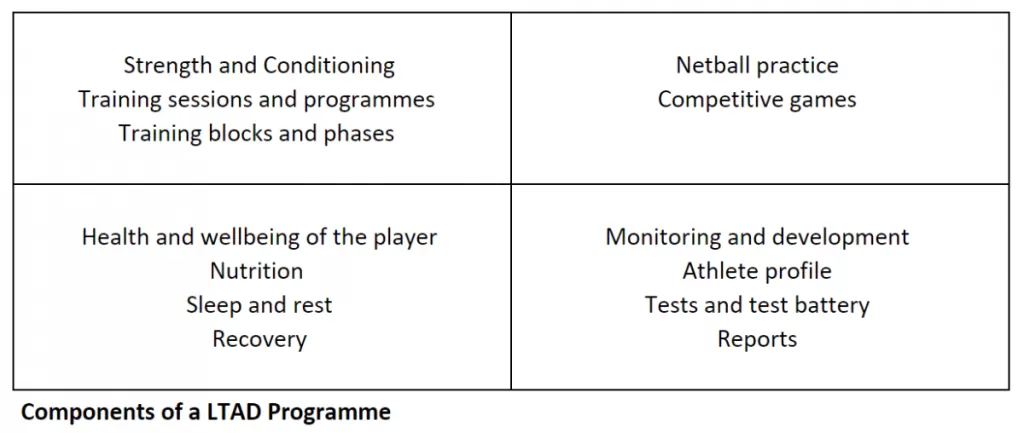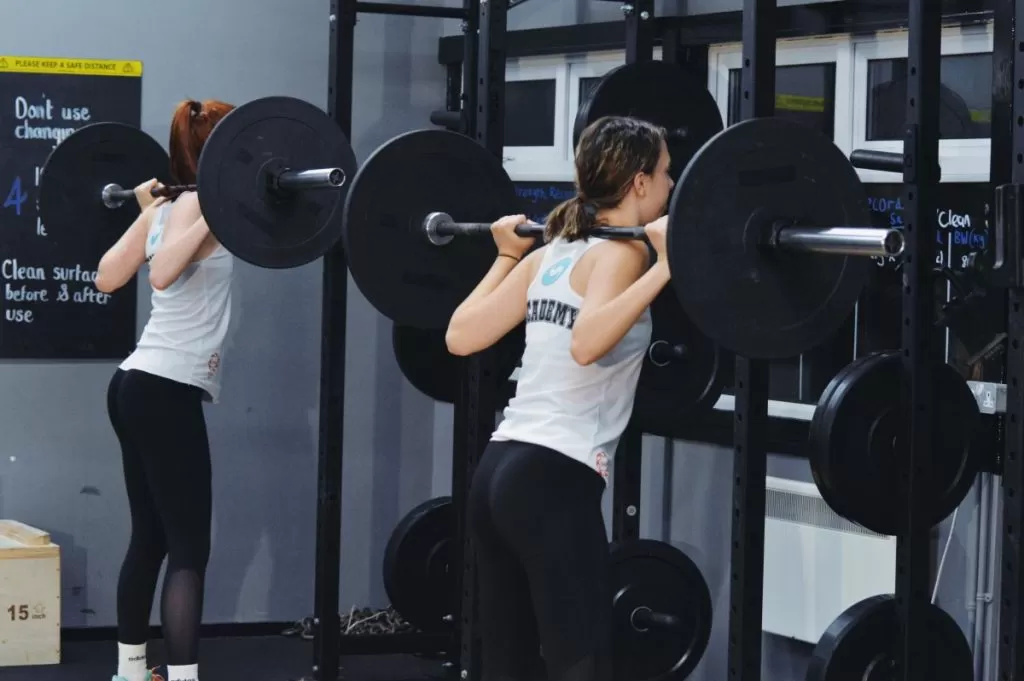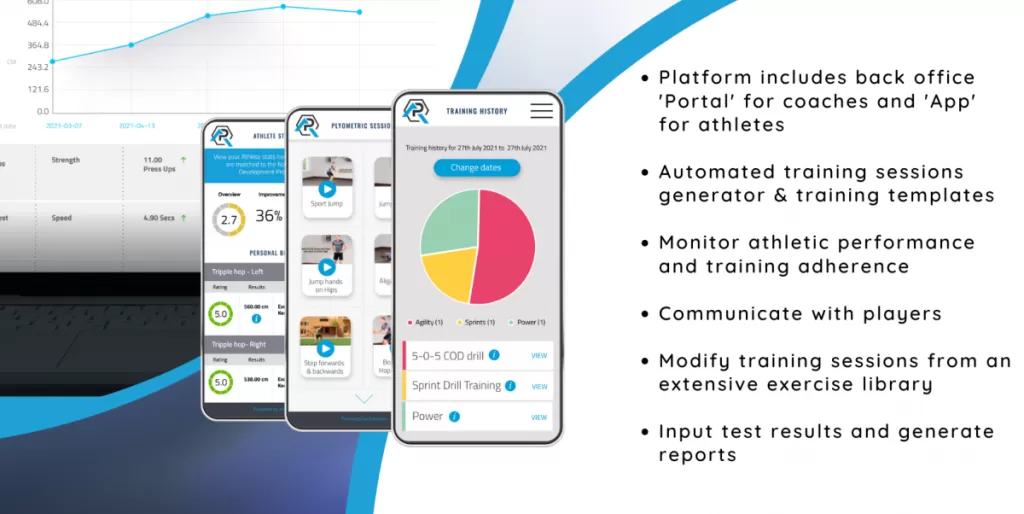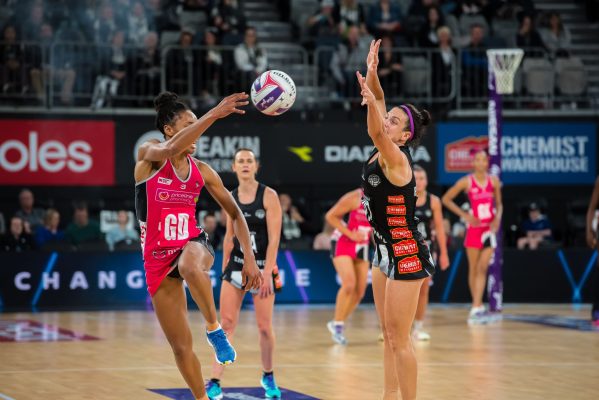Netball is a dynamic sport, which requires the players to be able to repeatedly jump, hop, leap, sprint and to change direction (Comfort & Jones, 2017), with the latter often referred to as cutting. Collectively, these physical attributes are known as the Sporting Demands, and as a netball coach, it is essential that we review the sporting demands so we can optimally prepare each player.
Interestingly, most if not all, of the physical attributes (sporting demands) are all trainable, meaning that they can be improved upon, and by improving them, this will inevitably benefit both the individual player and team within netball technical practice time and in competitive game performances. However, we must understand that physical preparation is one of the keys to sporting performance.
Using studies which have investigated the sporting demands in more detail, for example, within a 60-minute game, players perform a series of high-anaerobic bursts of hops and jumps, along with performing up to 80, very short (4 – 6 seconds), maximal sprints (Davidson & Trewatha, 2008).
From reviewing the sporting demands, we can start to build and deliver a Long-term Athlete Development Plan (LTAD) to prepare the player, to minimise the risk of injuries associate in the sport, and for long-term player performance.

By using a simple model to illustrate a LTAD programme, we can clearly see that strength and conditioning is very different to netball practice and competitive games. At a fundamental level, strength and conditioning, has 3 main objectives:
- Prepare the player for their sport – sport practice and competitive games
- Identify and minimise injury risks
- Develop physical attributes and capacities, which may transfer to game performances
Over the next few blogs, we will look at the other two objectives, i.e., minimising injury risks and developing physical qualities for performance (especially strength), but first let’s look at preparing the player for their sport.
Player Preparation
General preparation for sport practice and competition is probably the most overlooked aspect, especially with young players. According to the Youth Development Model (Lloyd & Oliver, 2012), exposing players from all ages to strength exercises, power drills, plyometrics and sprint training are essential. Additionally, we need to give adequate time to allow these physical qualities to develop. Using physical characteristics of established netball players, this can form a baseline of the different physical capacities and skills, which can be specifically trained and developed.

Interestingly, strength requirements were not reported in the above table. However, it is recommended that players work up to a relative back squat strength ratio of, 1.1 – 1.2 x bodyweight. As a Strength Coach, I think this is definitely a minimum requirement, as ground reaction forces have been reported as 6 – 7 times bodyweight when landing from different jumps; single and double leg (Hopper, McNair & Elliott, 1999). So, if a young player has a bodyweight of 56kg, the player should aim to back squat 61.6 – 67.2 kg. (At the Lab, we think this is a little low!).


Practical Application
At Advance Performance, and our unique training facility (The Lab), we work with and coach hundreds of netball players, different ages, abilities and needs. Each player completes a series of test elements, which creates their ‘Athlete Profile’. By completing the tests and creating the Athlete Profile, this informs the Strength Coach of the athlete’s physical capacities, helps to plan their strength and conditioning programme, and probably more importantly, highlights the importance of strength and conditioning to the player.
We use the below test battery to create our Athlete Profile:

Using our coaching management software, along with our Athlete App, we can prescribe a phase of training for each player with the goal to overload a specific quality or capacity. With regular monitoring of each player, we can adjust the strength and conditioning training, moving, and developing each player so they can cope with the demands of the sport. After which, we can look to progress and fine tune, gaining an advantage and performance.

Starting and implementing strength and conditioning within a LTAD programme does not have to be complex or difficult. However, it is essential that players create an Athlete Profile to identify physical capacities which need developing, furthermore, this helps to prescribe training modalities, exercises, and drills. Read more about our Athlete App and LTAD Programme to see how we can help.
References
Davidson A., & Trewatha G. (2008). Understanding the Physiological Demands of Netball: A time-motion Investigation. International Journal Perform Analysis of Sport, 8, 1 – 17.
Hopper, D.M., McNair, P., & Elliott, B.C. (1999). Landing in Netball. Effects of Taping and Bracing the Ankle. British Journal of Sports Medicine, 33, 409 – 413.
Lloyd R.S., & Oliver J.L. (2012). The youth physical development model. A new approach to long-term athletic development. Strength and Conditioning Journal, 34, 61 – 72.
Thomas C., Ismail, K.T., Comfort, P., Jones, P.A., Santos T. (2016). Physical Profile of Reginal Academy Netball Players. Journal of Trainology, 5, 30 – 37.
Thomas, C., Comfort, P., & Jones, P.A. (2017). Strength and conditioning for Netball: A Needs Analysis and Training Recommendations. Strength and Conditioning Journal, 39(4), 10 – 21.



